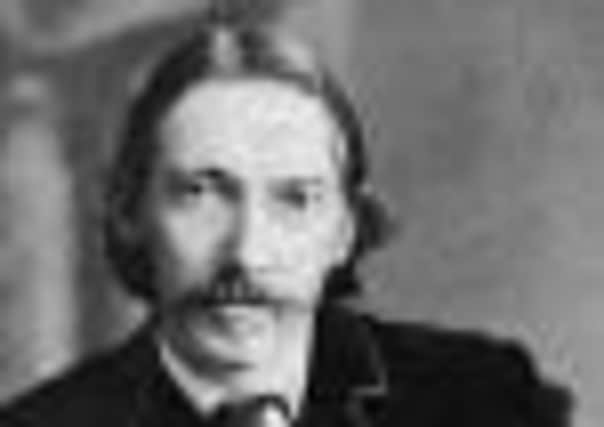Paul Henderson Scott: Let’s show off Scotland’s rich literary treasure


Edinburgh has had a Writers’ Museum for many years in the court between the Lawnmarket and the top of the Mound, a responsibility not of the Scottish Government but of the City of Edinburgh. It is in a fascinating old building with an alarming spiral stair. There are three attractive displays about Burns, Scott and Stevenson, but there is no space for more. This is a pity because visitors are liable to conclude that we have no more writers of any consequence.
In fact Scotland has had a rich literature for many centuries and in several languages: Latin, Gaelic, Scots and English. It continues vigorously in the present (except in Latin, of course). Until quite recently our universities and most of our schools took no notice of it, but there has been a gradual awakening. Several other countries have responded. The University of Warsaw, for instance, has just announced a conference in October on Scottish literature and languages.
Advertisement
Hide AdAdvertisement
Hide AdIn 2003 a group of enthusiasts for Scottish literature launched a campaign, which was successful, to persuade Unesco to appoint Edinburgh as the first World City of Literature. This seemed to me to make a comprehensive Museum of Scottish Literature even more necessary. Visitors attracted to Edinburgh by its new title would be astonished, if not outraged, to discover that we had a Writers’ Museum which claimed only three writers. I wrote to the National Library, the Scottish organisations concerned with literature and to the organisation of the World City itself to ask if they agreed that Edinburgh needed an adequate Museum of Scottish Literature. They all agreed. The most important of these replies was from Martyn Wade, the National Librarian, who is the director of the National Library. Their great collection of books and documents from the earliest time to the present must be the basis of the displays in the new museum.
The Council of the Saltire Society, of which I am a member, also agreed. In 2008, Cunison Rankin, at that time the chairman of the council, and I called on Michael Russell MSP, then the minister for cultural affairs. He welcomed the idea of a Museum of Scottish Literature, but said that there would be a problem with finance. Shortly afterwards, in May 2008, First Minister Alex Salmond, in a letter to me, said that he agreed that “the National Library is the appropriate institution to act as a showcase for Scotland’s literary heritage.” Martyn Wade then remarked that since the project had been approved by ministers in principle, it would eventually be achieved.
There is no space in the National Library itself to accommodate the new Museum, but there is an ideal location next door. This is the building known as the Lothian Chambers, at the corner of the High Street and George IV Bridge. It lies between the National Library and the Signet Library and across the street from the Edinburgh City Library. It is an appropriate size for the new museum with several large rooms which would be very suitable for the displays and for a lecture theatre. Is it at present used as the venue for civil marriages, but it should not be difficult to find another suitable building for that purpose.
Of course finance is now more of a problem than it was 2008, but it should be possible to begin preparations for the new museum without great expense. This is an appropriate time because the National Museum and the Scottish National Portrait Gallery have just been reopened after a long closure for extensive renovation. The new Museum of Literature would complete this excellent range for the enjoyment and study of the Scottish past. In a sense preparation has already begun, because the National Library has recently mounted a series of displays about Scottish writers of precisely the kind that would be required for the new museum, but has very little space to do so and they have to be changed frequently.
With some additional financial support the library could employ more designers to prepare plans for the displays in the museum. Since the building next door is owned by the Scottish Government, they could begin to make it available. The books and papers for the displays are already in the National Library and the Portrait Gallery could lend some portraits from those in storage. This important museum could therefore be launched with very little expenditure. I hope the Scottish Government will now give the go-ahead.
The main purpose is not only to give visitors to Edinburgh some idea of the range and pleasures of our literature, but to make many of our own people aware of a resource of which their education has left them in ignorance. This is surprising because for several centuries Scotland probably had the best education in Europe. Scots were in demand in Europe from France to Russia for senior posts in government and in universities. In the 19th century the Empire replaced Europe in the demand for Scottish talent.
In the last century there has been a drastic reduction in Scottish self-confidence. Many Scots seem to believe that Scotland is a miserable place without past achievements or future prospects. This may be due to the neglect of Scotland in many of our schools, and to the influence of radio and television largely controlled by London which tends to give the impression that nothing of importance happens here.
Advertisement
Hide AdAdvertisement
Hide AdIt is a sad state of mind that must be resisted. The Scottish Government’s encouragement of more attention to Scottish literature and history in schools will help. So will the restoration of the National Museum and the Portrait Gallery and a new Museum of Scottish Literature. Perhaps also the response of the international press to the debate on independence is an indication that Scotland matters.